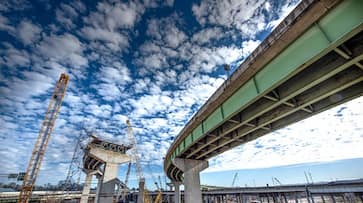Our main focus should be on infrastructure investment and nation-building as they will help us revive the country
Bengaluru: Our country is being torn apart. With violent protests spreading around the country, public property and infrastructure are being damaged and destroyed. So, owing to these recent disruptions and destructions around the country, the importance of a developed infrastructure has again come to the forefront. We should start building back our country and that needs to begin with infrastructure. Also, given the economic slump, infrastructure development can be a crucial driver for growth, development and increased consumption. The government has time and again realised the potential of the infrastructure sector. In the recent Budget, we saw that the government plans to invest Rs 1.70 lakh crore for transport infrastructure and accelerating highways construction alongside the National Infrastructure Pipeline.
If we take a look at Economic Survey of 2017-18 by the government of India, we will see that even they mention that there should be an increased investment on infrastructure, specifically transportation, energy, communication, housing and sanitation and urban infrastructure sector. Even the Global Infrastructure Outlook predicted that demand will increase and prosperity will further increase the demand for further investment in infrastructure in the coming twenty-five years.
It is estimated that India will require around US $ 4.5 trillion investments for it to develop infrastructure and for improving the economic growth and prosperity of the country by 2040. However, if we take into consideration the recent trends, India only fulfils US $ 3.9 trillion per year of its required US $ 4.5 trillion. This implies that by the year 2040, we would still have a cumulative infrastructure investment gap of US $ 526 billion.
Also read: Delhi Riots 2020: One-sided media narratives are further instigating violence
We all know that the development of roads and highways have a multiplier effect for trade and commerce thus translating to an overall increase in the economic development of the country. Given the magnitude of road constructions that are required for our country, NHAI would definitely fall short of funds. Thus, NHAI would require more funds to ensure that these projects get completed in the given timeframe. So, the only workable option, in this case, is to monetise its already available completed projects which now could be the assets for NHAI to attract private investors!
Last year in December, the government of India gave the permission to the National Highways Authority of India (NHAI) to set up Infrastructure Investment Trust (InvIT) which will help it monetise the various national highway projects. These InvITs function like the mutual funds where a small sum of money is pooled from many investors to invest in these assets which will give a cash flow for a period of time. This move will help the NHAI monetise all those highways which have toll collection for at least a year and NHAI has the right to levy the toll. Through this InvIT, we can expect more investors to invest a patient capital for at least 20 to 30 years as they would like to minimise the constructions and will look at these as long-term stable assets. This move will also enable the retail domestic savings and corpus of special institutions like mutual funds, PFRDA, etc, to act as investments in infrastructure. We all know that roads and highways act as a lifeline for an economy. This move will definitely pump the entire network of highways and will ensure that world-class highways soon reach even far-flung areas of our country. This move to monetise the completed and operational national highway projects by mobilising additional resources through capital markets comes after quite a learning curve!
Such monetisation will help the country develop at a faster pace as the constraints for funds are now removed. It will help us unlock the value of these assets thus attracting private players in these development projects to bridge the investment gap.
Last Updated Mar 3, 2020, 8:10 PM IST









![Salman Khan sets stage on fire for Anant Ambani, Radhika Merchant pre-wedding festivities [WATCH] ATG](https://static-gi.asianetnews.com/images/01hr1hh8y86gvb4kbqgnyhc0w0/whatsapp-image-2024-03-03-at-12-24-37-pm_100x60xt.jpg)
![Pregnant Deepika Padukone dances with Ranveer Singh at Anant Ambani, Radhika Merchant pre-wedding bash [WATCH] ATG](https://static-gi.asianetnews.com/images/01hr1ffyd3nzqzgm6ba0k87vr8/whatsapp-image-2024-03-03-at-11-45-35-am_100x60xt.jpg)


